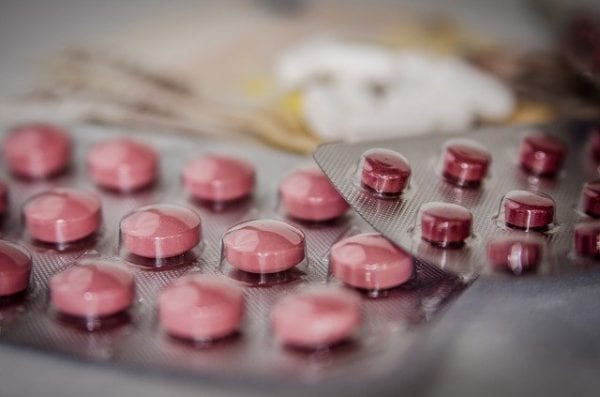As a medication expert, being up to date on adverse effects is essential! I recently stumbled into this review article on drug-induced Lupus and I had to share it and some of my thoughts.
Symptoms of Drug-Induced Lupus
Patients are usually pretty good about reporting significant adverse effects or potential adverse effects. This is especially true when the symptoms are impacting the patient’s quality of life. Drug-induced Lupus can be very distressing and uncomfortable for the patient.
One really good thing about this type of reaction is that it is typically self-limiting once the drug is discontinued. It should slowly wane over time when the drug has been stopped.
Rash, fever, and muscle pain are alarm symptoms for me. These symptoms could easily be caused by multiple different medical conditions, infections, or drugs. If you encounter a patient with new symptoms, it is our job as pharmacists to review and recognize the potential for drugs to cause new issues. These are hallmark symptoms of Lupus and should be recognized. Once recognized, we need to take a look at that medication list!
Drugs That Cause Lupus Symptoms
There aren’t many drugs that are commonly used that can cause this adverse effect. That’s a good thing. Within the article mentioned above, some of the notable drugs include hydralazine, procainamide, quinidine, isoniazid, diltiazem, targeted immunotherapy (i.e. anti-TNF alpha agents), and minocycline as potential causes.
The most common agents I’ve seen in my clinical practice are the antihypertensives diltiazem and hydralazine. We can usually find alternatives for these agents for blood pressure or atrial fibrillation (diltiazem).
Quinidine and procainamide are not used in clinical practice very often at all. It has been some time since I have seen these agents. However, we have to be aware of this issue if a patient is on these agents.
Targeted immunotherapy use is likely to continue to grow over time, so it is a good idea to keep this risk in mind.
Isoniazid is well known to be used in tuberculosis management. In my particular region, it is rarely used, but in other parts of the world, the frequency of use may be much higher.
Lab
There is a lab called an ANA (antinuclear antibody). This lab can help differentiate if a patient is experiencing drug-induced Lupus. It is recommended to assess this lab with the use of hydralazine and particularly if the patient is experiencing potential symptoms of a Lupus type reaction. .
Summary
In patients who are struggling with symptoms suggestive of potential drug-induced Lupus-like fever, rash, or myalgias, you need to speak up and say something if you believe a patient’s medication(s) are causing this. This is particularly true if the patient has recently started a drug that can cause this situation.



FYI, had a patient recently who had Drug Induced Lupus from Minocycline (not a geriatric patient, but in
a retail setting) – it was really distressing for her, since she was just taking the antibiotic for acne (I think) and ended up with lupus like reaction which had not subsided – but I imagine this is unusual.
interesting, thanks for the comment!
I would change your recommendation about checking ANA. Drug-induced SLE can be ruled out if the ANA is negative. However, measuring the ANA because someone is getting a drug (e.g., hydralazine) is misleading. the ANA can be positive and the patient have no symptoms. That is NOT drug-iduced SLE.
Thanks for the comment Bill, good point!
Anti-histone antibodies are present in more than 95 percent of patients overall. So good idea to check for anti Histone abs in patients of Drug induced acne. Typical anti DS-DNA antibodies characteristic of lupus are absent in drug induced lupus. Thanks